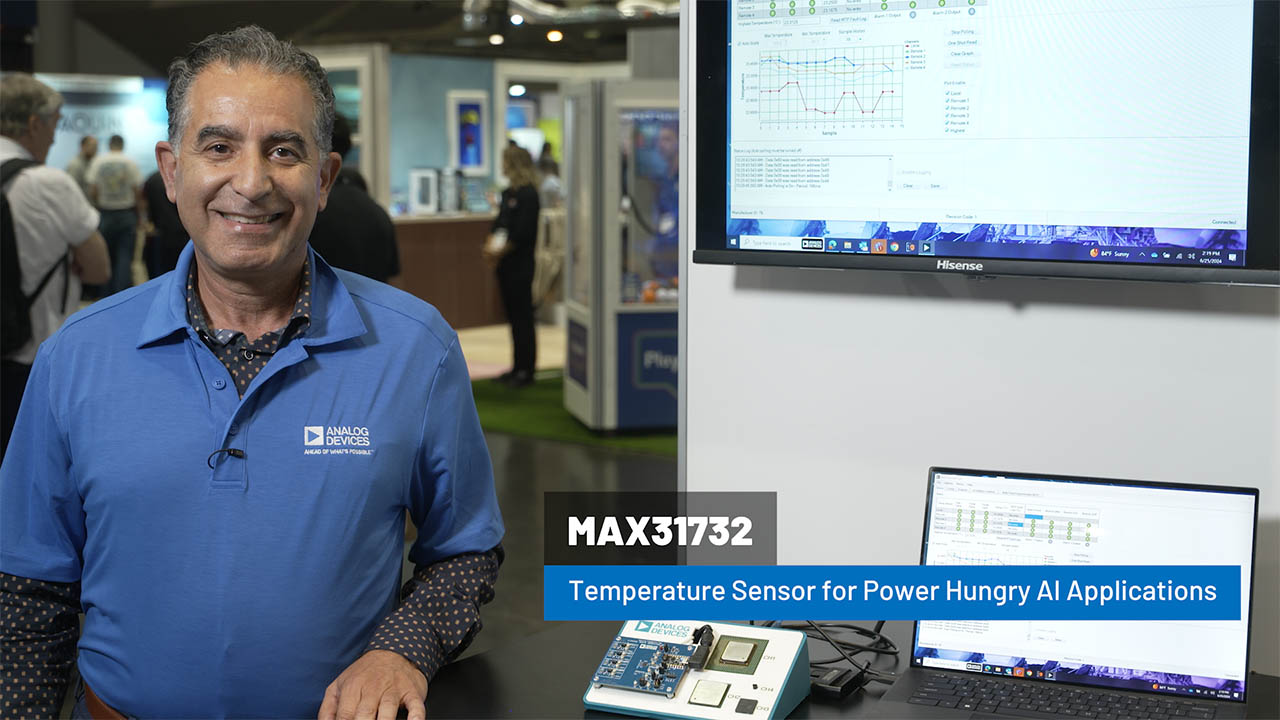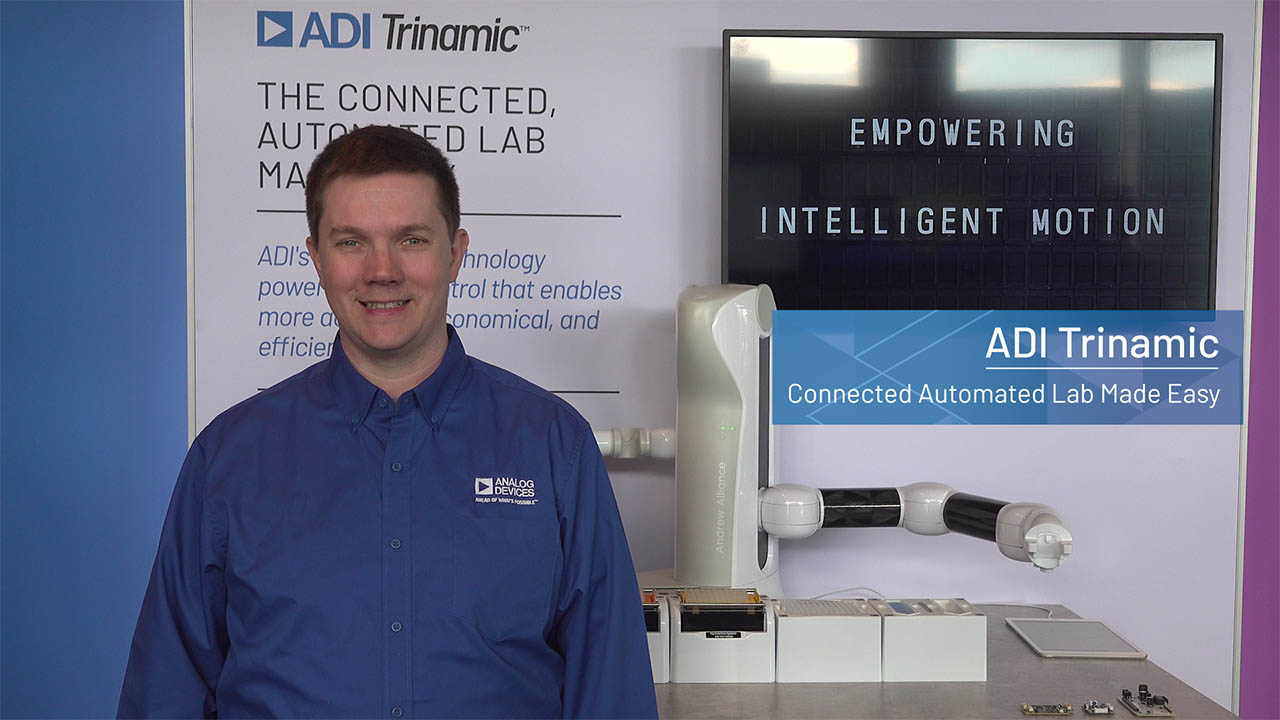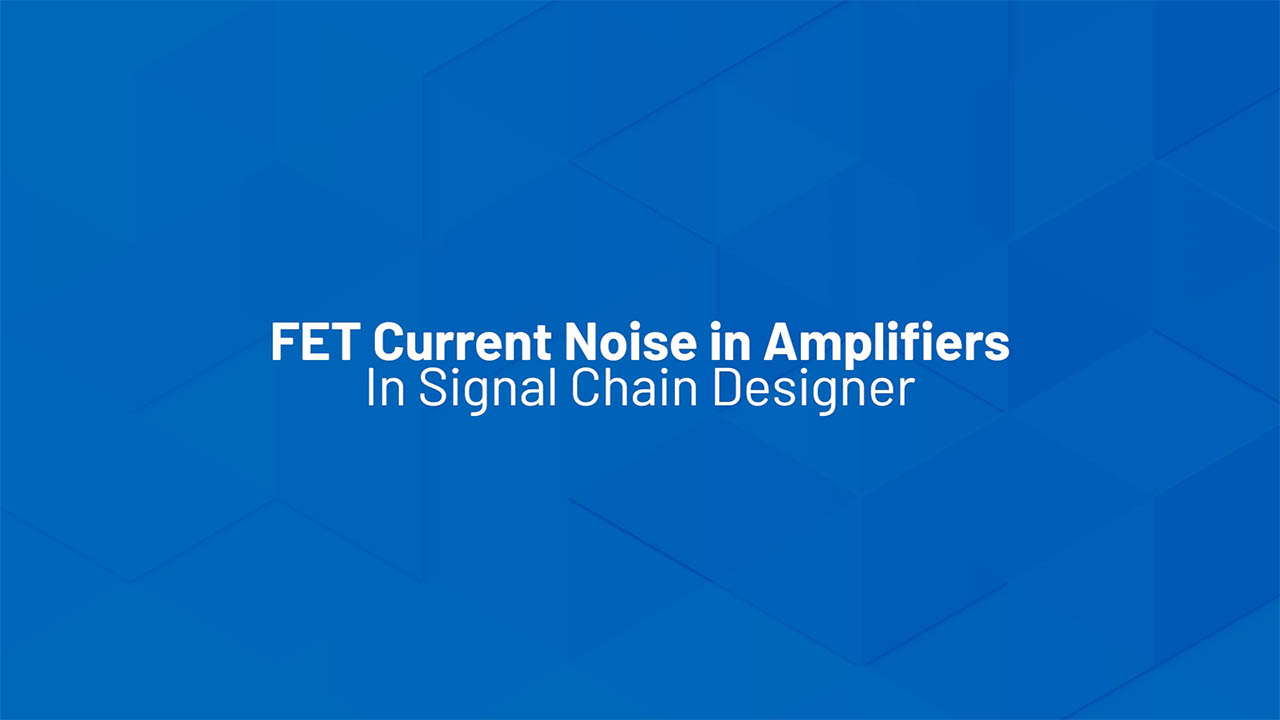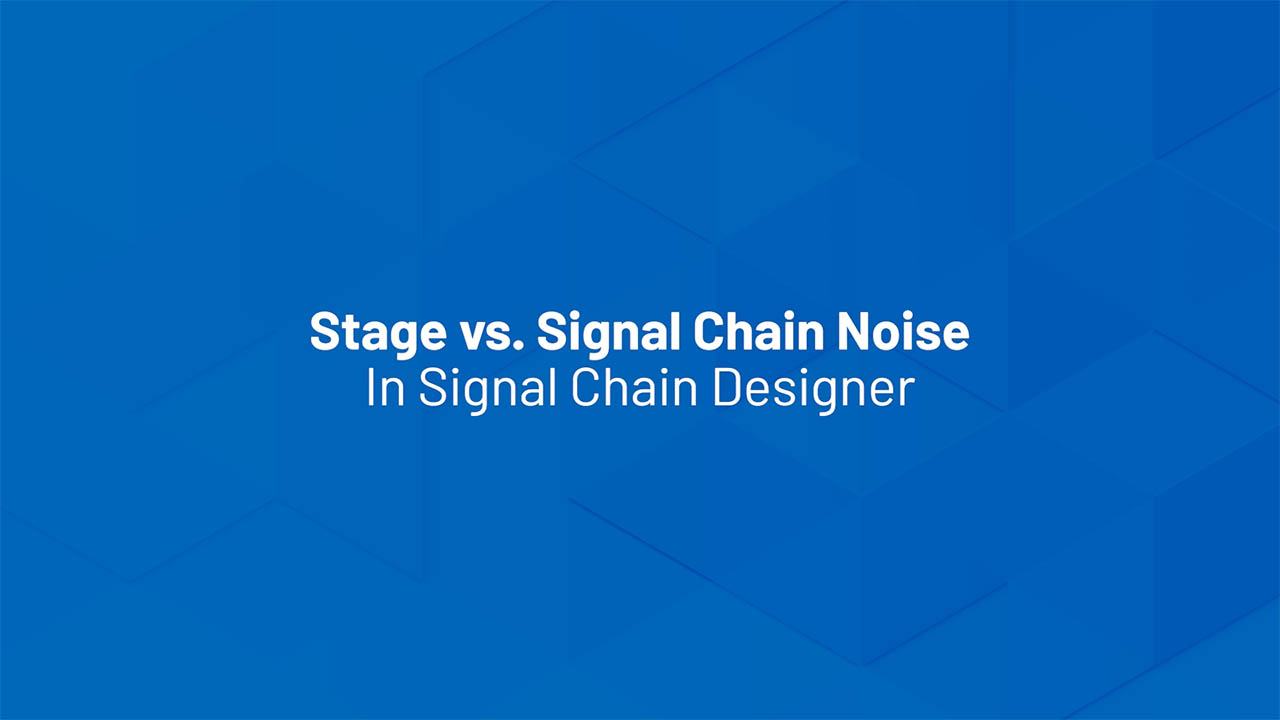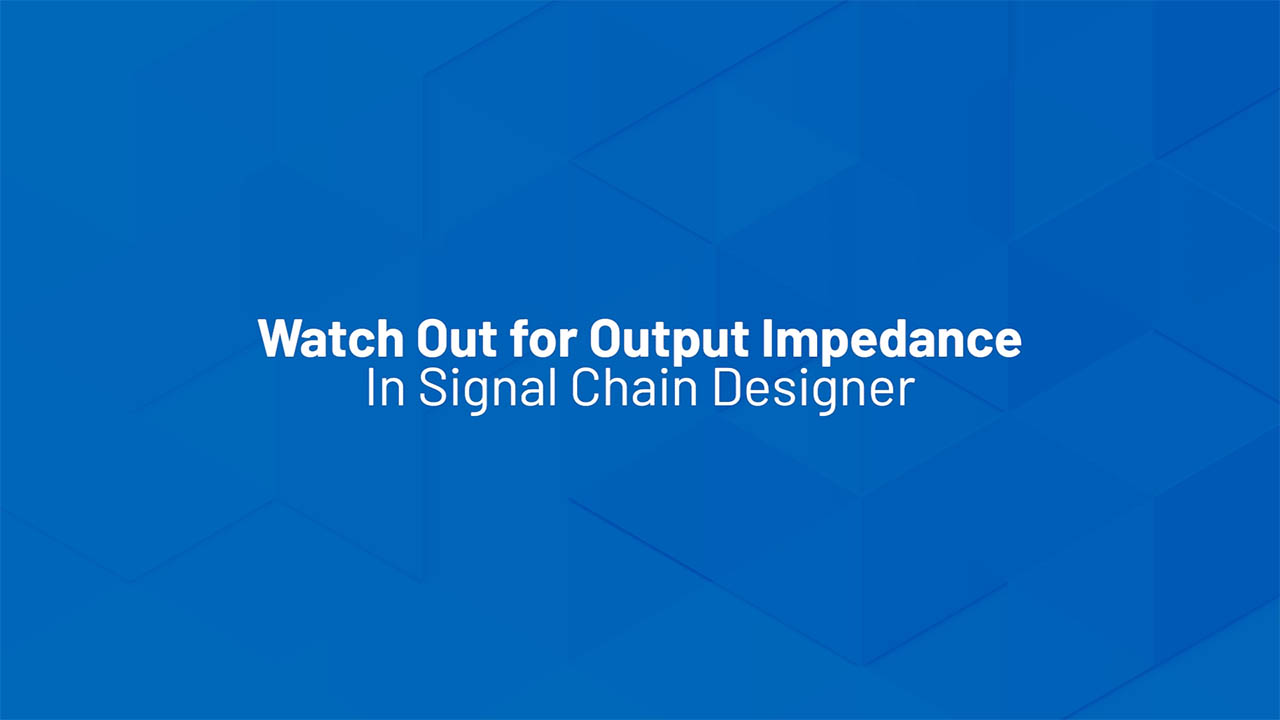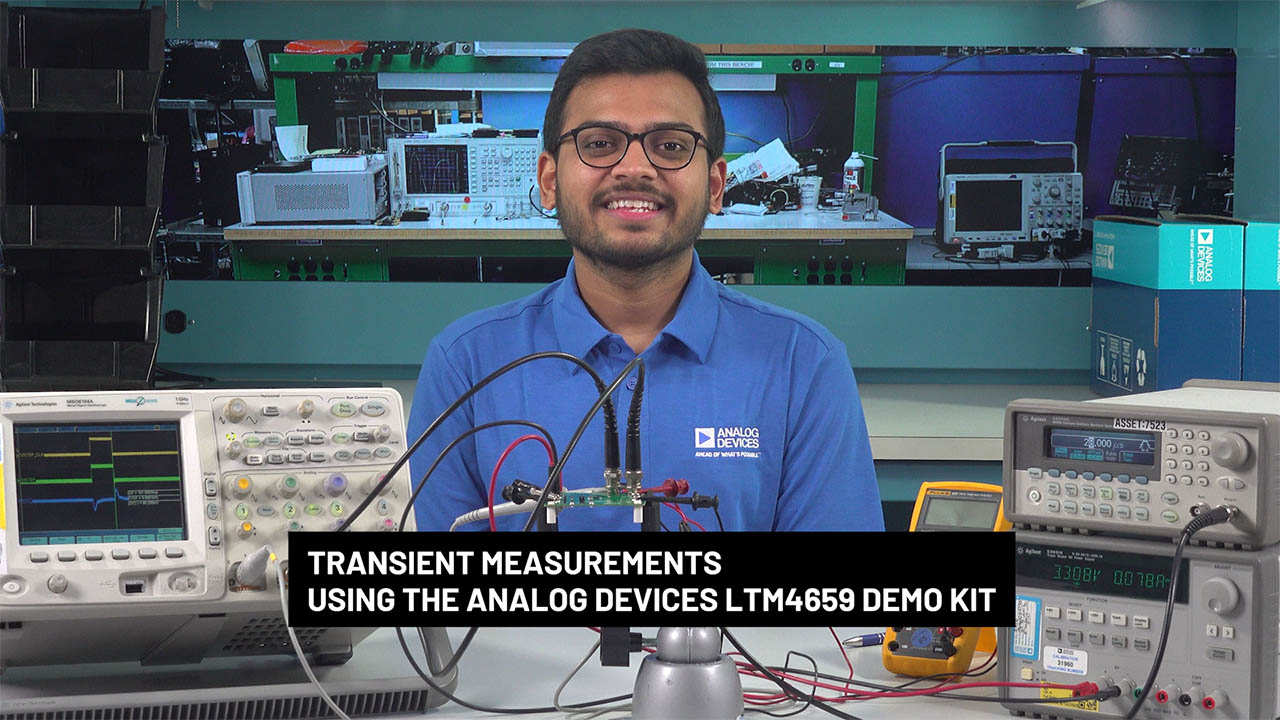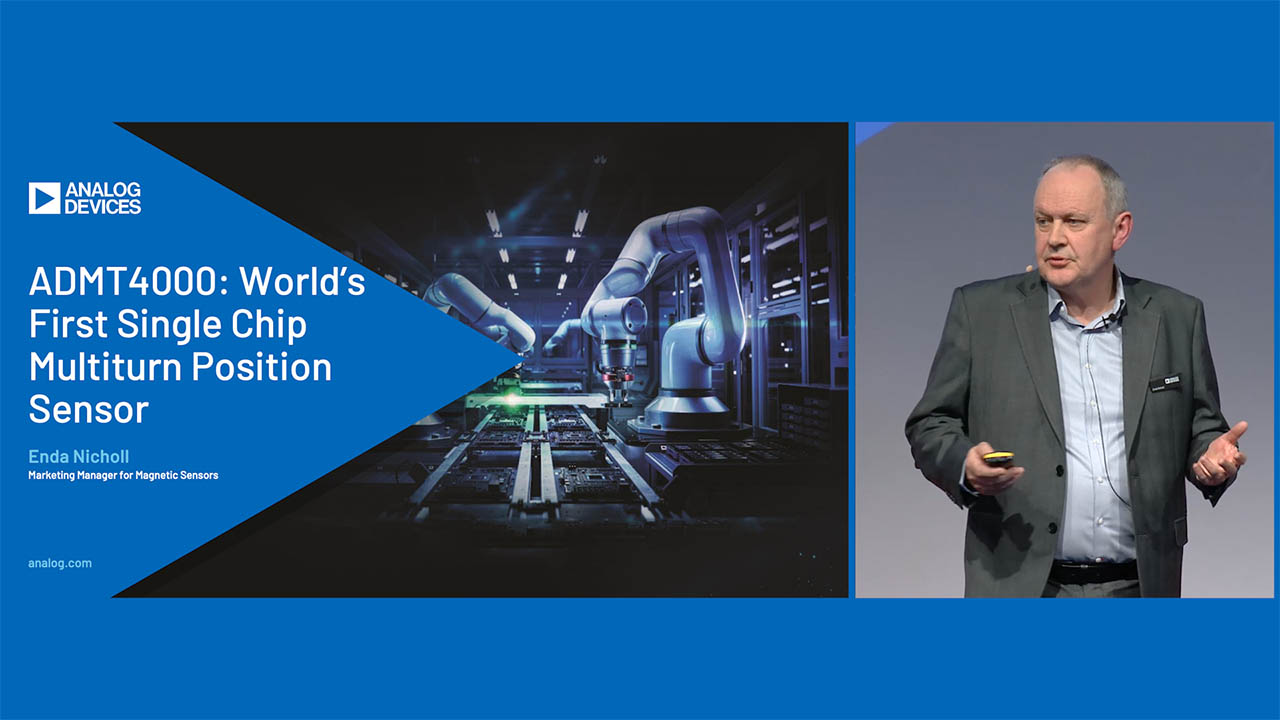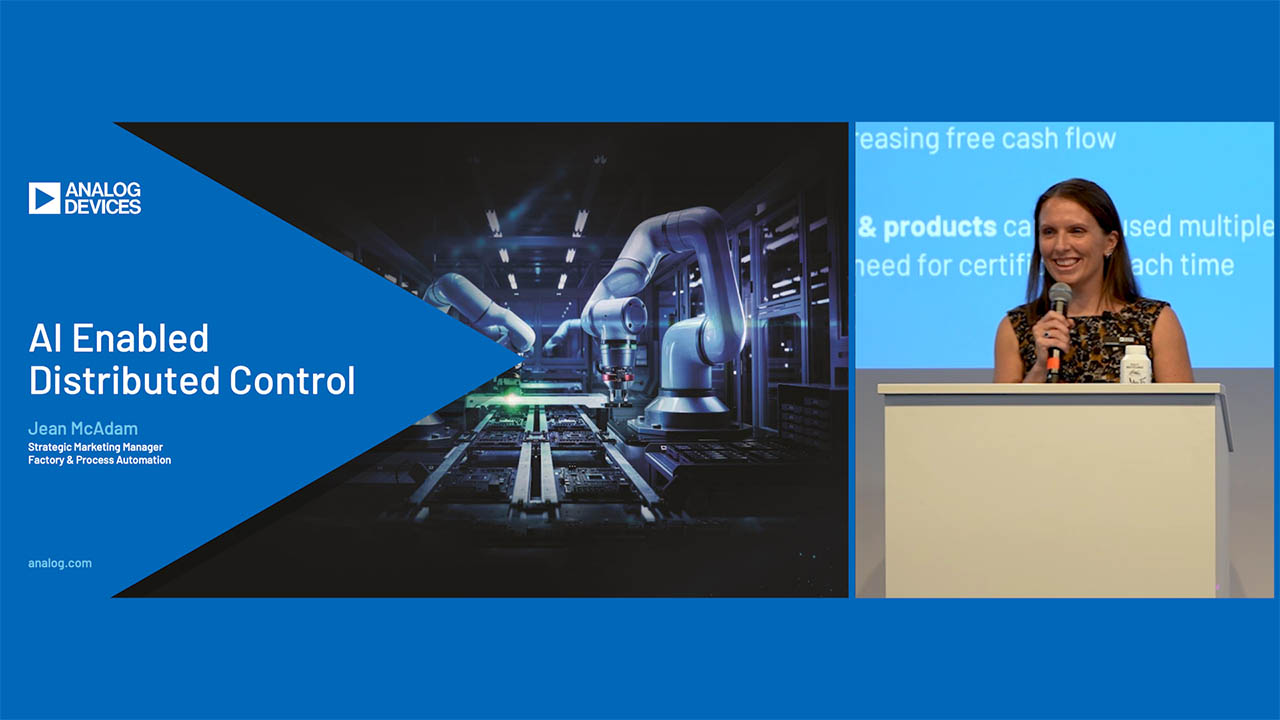Reduce the Chances of Human Error: Part 2, Super Amps and Filters for Analog Interface
Read other articles in this series.
要約
A common view holds that digital circuits just work naturally, but analog circuits are hard to implement. There is truth to that old belief—analog interface is an expert subject that requires training. It is, moreover, always better to avoid an issue than to try to solve it later. This is precisely why we should take advantage of some basic concepts that experienced analog engineers perform as a reflex. This application note provides some basic reminders and concepts about amplifiers and filters for you to consider during a design.
Introduction
As children we learned to share and in that process we learned about portions. Many parents taught this to children by having one child cut the pie or cake and then letting another child pick the piece first. We can be sure that great care was used to make the pieces all the same size.
We are reminded of a good lesson in life, "It's the ratio that counts." We use ratios in everyday life when we compare distances between different routes or the taste of two foods. (Yes, mom's cooking was better, or maybe we were too young to know any difference?).
Moving from children, pies, and cakes to analog engineering design, we realize that ratios—the relative amount, proportion, percentage, share, part, and fraction—are all important measurements in analog design. When we ignore these ratios and relationships, we introduce human error into what must be a precise process. This application note shares some analog concepts about amplifiers and filters that will help reduce the chances of "human" error and improve the analog design.
Considerations for Signal to Noise (SNR)
Crosstalk and signal to noise (SNR) are expressed as ratios, a proportion of good to bad. How does one improve the SNR of a signal? If a particular circuit contributes considerable noise, we have two basic options: first, reduce the noise somehow, or second, increase the amplitude of the good signal before it goes through the stage. Figure 1 illustrates the concept.

Figure 1. Power-supply noise is added to the signal.
In application note 4992, "Reduce the Chances of Human Error: Part 1, Power and Ground," we concentrated on power noise, ground, and layout. In this companion article we examine how to control noise in the signal path. We discuss the characteristics of the signal and noise as we proceed through the various circuit stages.
Is the major noise source harmonics of a switching power supply? If the power-supply noise is 50kHz and higher and if our wanted signal is 1kHz, then filtering may be feasible. If we will be going into an ADC next, the anti-aliasing filter may help.
Reducing Noise
What possibilities does an experienced circuit designer evaluate? The simplest fix is to amplify the signal before the noise is added. Yes, straightforward enough, but unfortunately this solution most often cannot be used because the incoming signal already has noise present. So now we get creative and consider how to separate the signal from noise? Can we use highpass, lowpass, or bandpass filters? Can we discriminate on the basis of amplitude, limiting, noise blanking, or coring? Can we use preemphasis before the noise is introduced and deemphasis after to increase SNR? Can we discriminate on the basis of time, i.e., sample at a minimum noise level or interference time? Can we time average, or if the signal is repetitive, can we sum cycles or average in two, three, or more dimensions?
Turning from component functions, think about the system as a whole. What are the system goals? How will the system be used? How will the human senses interact with the information provided by the system? In short, consider all the information that we can muster.
The above set of questions reflects considerable design experience and knowledge. This is precisely why smart companies hire experienced engineers and mentor the new engineers to build a solid design team.
We can use an example to illustrate the thinking and development process. The first observation finds that the system has a high-gain operational amplifier at its input. The op amp feeds an analog-to-digital converter (ADC). Occasionally a large noise pulse appears on the signal and this causes the op amp to saturate. The op amp recovery time might be as long as milliseconds or seconds. How will we approach the issue? Since every case will be different, we will just ask questions and point out possible solutions.
First, gather data to try to understand what is happening. Can we fix the source? No. So we decide that the noise spike is unavoidable. What do we know about its risetime amplitude and duration? If the spike is very fast and narrow and our wanted signal is relatively slow, can we separate them by filtering? Can we detect the spike and open a series switch to blank out the spike from the main path? Could we add a pair of diodes like an electrostatic discharge (ESD) structure to clip any signal that goes above VCC or below ground? Can we learn from application note 4344, "Rail Splitter, from Abraham Lincoln to Virtual Ground?" In Figure 2 of that application note we create a voltage between VCC and ground at the average signal level of the wanted signal. If the series resistor was replaced with a pair of back-to-back diodes (Figure 2), the signal spike would be limited to the voltage ±0.6V for silicon diodes (red dashed lines) and ~±0.3V for Schottky diodes (green dashed lines). The reverse recovery time for silicon diodes can be between one hundreds and several hundreds of nanoseconds. Schottky diodes have a switching time of ~100ps for the small signal diodes but, because of their operating physics, do not have a reverse recovery time. The diodes can also be placed in the op amp feedback loop to reduce gain during the spike. Figure 3 shows the effect of limiting.

Figure 2. Replacing a series resistor with a pair of back-to-back diodes.

Figure 3. Diode limiter effect, ±0.3V Schottky, ±0.6V silicon.
Figure 3 may help relieve op amp saturation and recovery time, but is it enough? We could add circuits to blank out the noise pulse as in Figure 4.

Figure 4. Noise pulse blanking.
The block diagram of the blanking circuit is Figure 5.

Figure 5. Noise-blanking block diagram.
From the basic concept of blanking in Figure 5, more elegance can be added. The input buffer may not be needed if the source is low impedance. R1 and R2 set a DC value as shown in application note 4344, "Rail Splitter, from Abraham Lincoln to Virtual Ground," mentioned above. Alternatively, the input signal could be AC coupled to this same voltage or the input signal could be averaged over the long term to produce this voltage. The main signal path is from the input buffer through a RC delay, the mux, buffer, and lowpass filter to the ADC. The MAX11203 ADC has four general-purpose input or output (GPIO) ports controlled by the SPI interface. The GPIO is set so that the AIN1of the MAX313 multiplexor is on and AIN2 is off. We highpass or differentiate the noise pulse. The dual or window comparator output will be active while the noise pulse exceeds 0.3V in either the positive or negative direction. The XOR gated inverts the logic to the mux, thereby turning off the main path and switching on the DC voltage. The RC delay also delays the main path long enough for the comparator path to change state. If the RC delay degrades the signal bandwidth too much, an LC delay line can be substituted.
The input buffer of Figure 5 could use a MAX4209 instrument amplifier which has incredibly low offset drift despite its high gain. Application note 4179, "Autozero Noise Filtering Improves Instrumentation Amplifier Output," explains why.
The filter just before the ADC in Figure 5 can control signal bandwidth to meet Nyquist anti-aliasing, reduce noise, or soften the residual blanking glitch. The following application notes will provide advice and ideas:
- 3077, "A Digitally Controllable Lowpass Filter Using a Digital Potentiometer"
- 928, "Filter Basics: Anti-Aliasing"
- 3716, "Folded-Frequency Calculator"
- 3494, "The Basics of Anti-Aliasing: Using Switched-Capacitor Filters"
- 733, "A Filter Primer"
- 1795, "Analog Filter Design Demystified"
- 724, "Generating Switched-Capacitor-Filter Clocks"
Application note 4617, "ADC Input Translator," uses resistor-dividers to scale the differential inputs and a stable voltage reference to offset the inputs. This circuit design enables an ADC with a 0V to 5V input range (e.g., the MAX1402) to accept inputs in the range +10.5V to -10.5V.
Calibration ideas using digital-to-analog converters (DACs) and potentiometers are covered in application notes 4494, "Methods for Calibrating Gain Error in Data-Converter Systems," and 818, "Digital Adjustment of DC-DC Converter Output Voltage in Portable Applications." The digital-output voltage-adjustment methods are performed with DAC, a trim pot (digital potentiometer), and PWM output of a microprocessor. Application note 4704, "Introduction to Electronic Calibration and Methods for Correcting Manufacturing Tolerances in Industrial Equipment Designs," includes a discussion of the DS4303 infinite sample-and-hold to capture a DC Voltage. Other application notes about digital pots include:
- 4101, "Differentiating Digital Potentiometer Features"
- 593, "Dallas Semiconductor Digital Potentiometers: Frequently Asked Questions"
- 4025, "DACs vs. Digital Potentiometers: Which Is Right for My Application?"
Analog I/O, interface circuits and digital-port signal protection ideas are discussed in the following application notes:
- Sensor signal conditioners
- 651, "ESD Protection for I/O Ports"
- 1167, "Practical Aspects of EMI Protection"
- 3950, "A Measurement Technique for Determining RF Immunity"
- RS-232, RS-485, smartcard interface, USB, LVDS
- 2023, "LVDS Serializer-Deserializer Performance over Twisted Pair Cable"
Maxim has watchdog circuits which ensure that microprocessor-controlled devices react in a known manner if the processor loses control. The following application notes offer ideas for using watchdogs: 4558, "Simple Latching Watchdog Timer," and 4229, "Comparison of Internal and External Watchdog Timers."
Microprocessor-controlled system clocks typically are of two types: system clocks controlling computing functions in orderly ways, and real time clocks (RTCs) or clocks that relate to human time concepts. Computer clocks operate like soldiers marching in cadence. This can result in interference products that may not meet regulatory requirements. Clock-generator spread-spectrum techniques to reduce this interference are discussed in these notes: 2863, "The Effects of Adjusting the DS1086L's Dither Span and Dither Frequency on EMC Measurements," and 3512, "Automotive Applications for Silicon Spread-Spectrum Oscillators." RTC ideas are found at "Reduce the Chances of Human Error: Part 1, Power and Ground".
Conclusion
Noise and interference control is different in every circuit and system. Thankfully, the laws of physics prevail and engineers must work hard to silence noise. This discussion has tried to help designers anticipate noise and interference issues before the design starts and during the design. After the product is in production, the options for correction are severely limited.
この記事に関して
製品
製造中
フォルト保護、高電圧、信号ラインプロテクタ
製造中
AutoShutdown Plus付き、消費電流1µA、1Mbps、3.0V~5.5V、RS-232トランシーバ
新規設計に推奨
±15kV、ESD保護、絶縁RS-485/RS-422データインタフェース
4次および8次、連続時間型アクティブフィルタ
4次および8次、連続時間型アクティブフィルタ
±15kV ESD保護、低電圧、SPDT/SPST、CMOSアナログスイッチ
±15kV ESD保護、低電圧、クワッド、SPST、CMOSアナログスイッチ
±15kV ESD保護、低電圧、クワッド、SPST、CMOSアナログスイッチ
高精度、デュアル電源、SPST、CMOSアナログスイッチ
±15kV ESD保護、低電圧、デュアル、SPST、CMOSアナログスイッチ
±15kV ESD保護、クワッド、低電圧、SPSTアナログスイッチ
±15kV ESD保護、低電圧、CMOSアナログマルチプレクサ/スイッチ
スペクトラム拡散EconOscillator
3.3V、スペクトラム拡散EconOscillator
3.3Vスペクトラム拡散EconOscillator
EconOscillator周波数シンセサイザ
3.3Vセンタースペクトラム拡散EconOscillator™
3ピンシリコン発振器
マルチフェーズスペクトラム拡散EconOscillator
低周波数、スペクトラム拡散EconOscillator
シャットダウン付き、高出力ドライブ、高精度、低電力、単一電源、レイルトゥレイルI/Oオペアンプ
クワッド、プログラマブルDAC、CMOSコンパレータ
REFバッファ付き、超低オフセット/ドリフト、高精度計測アンプ
超低オフセット/ドリフト、低ノイズ、高精度SOT23アンプ
シャットダウン付き、高出力ドライブ、10MHz、10V/µs、レール・ツー・レールI/Oオペアンプ、SC70
インタリーブされたLVDS入力付き、16ビット、500Msps、補間および変調デュアルDAC
CMOS入力、14ビット、200Msps、高ダイナミック性能、デュアルDAC
低コスト、低電力、3線式シリアルインタフェース付き8ビットDAC、SOT23
デュアル温度制御NVデジタル-アナログコンバータ
2線式シリアルインタフェース付き、不揮発性、クワッド、8ビットDAC
不揮発性、クワッド、8ビットDAC
CMOS入力、12ビット、500Msps補間および変調デュアルDAC
LVDS入力、14ビット、250Msps、高ダイナミック性能、デュアルDAC
低コスト、低電力、6ビットDAC、3線式シリアルインタフェース、SOT23
2線式シリアルインタフェース付き、不揮発性、クワッド、8ビットDAC
デュアル、10ビット、電流シンク出力DAC
LVDS入力、12ビット、250Msps、高ダイナミック性能、デュアルDAC
デュアル、10ビット、プログラム可能な、30mA大出力電流DAC
低コスト、低電力、6ビットDAC、3線式シリアルインタフェース、SOT23
CMOS入力、16ビット、500Msps補間および変調デュアルDAC
2線式シリアルインタフェース付き、低コスト、低電力、8ビットDAC、SOT23パッケージ
不揮発性、クワッド、8ビットDAC
シリアルインタフェース付き、32チャネル、14ビット、電圧出力DAC
LVDS入力、16ビット、250Msps、高ダイナミック性能、デュアルDAC
CMOS入力、14ビット、500Msps、補間および変調デュアルDAC
2線式シリアルインタフェース付き、低コスト、低電力、8ビットDAC、SOT23パッケージ
2線式シリアルインタフェース付き、不揮発性、デュアル、8ビットDAC
低コスト、低電力、3線式シリアルインタフェース付き8ビットDAC、SOT23
CMOS入力、12ビット、200Msps、高ダイナミック性能、デュアルDAC
10ビット、電圧出力DAC、8ピンµMAXパッケージ
16ビット、200Msps、高ダイナミック性能、CMOS入力、デュアルDAC
低コスト、低電力、6ビットDAC、2線式シリアルインタフェース、SOT23パッケージ
ブロードバンドアプリケーション用、1.8V、12ビット、250Msps ADC
ブロードバンドアプリケーション用、1.8V、12ビット、210Msps ADC
+5V、18ビット、低電力、マルチチャネル、オーバサンプリング(シグマデルタ) ADC
14ビット、95Msps、3.3V ADC
デュアル、80Msps、12ビット、IF/ベースバンドADC
デュアル、80Msps、14ビット、IF/ベースバンドADC
デュアル、65Msps、14ビット、IF/ベースバンド ADC
ブロードバンドアプリケーション用、1.8V、12ビット、170Msps ADC
ノイズフロアが-82dBFSの、広ダイナミックレンジ、16ビット、80Msps ADC
14ビット、65Msps、3.3V ADC
マルチチャネル、14ビット、200kspsアナログ-デジタルコンバータ
デュアル、65Msps、12ビット、IF/ベースバンドADC
10ビット、不揮発性、リニアテーパ、デジタルポテンショメータ
プッシュボタンインタフェース付き、ステレオオーディオテーパポテンショメータ
32タップ、FleaPoT™、2線式デジタルポテンショメータ
トリプルNV小ステップサイズ可変抵抗器およびメモリ
256タップ、不揮発性、SPIインタフェース、デジタルポテンショメータ
プッシュボタンインタフェース付き、ステレオオーディオテーパポテンショメータ
デュアル温度制御NV可変抵抗およびメモリ
32タップ、ワンタイムプログラマブル、リニアテーパデジタルポテンショメータ
256タップ、SOT-PoT、低ドリフトデジタルポテンショメータ、SOT23パッケージ
精度マッチング済み、抵抗分圧器、SOT23
32タップ、FleaPoT™、2線式デジタルポテンショメータ
±15V、128タップ、低ドリフト、デジタルポテンショメータ
低電力デジタルポテンショメータ
デュアル、256タップ、不揮発性、I²Cインタフェース、デジタルポテンショメータ
I/Oおよびメモリ付き、ヘックス(6回路)不揮発性ポテンショメータ
256タップ、µPoT、低ドリフト、デジタルポテンショメータ
100kΩ精度マッチング済み抵抗分圧器、SOT23パッケージ
32タップ、FleaPoT™、2線式デジタルポテンショメータ
不揮発性トリマポテンショメータ
高電圧、NV、I²Cポテンショメータ
256タップ、SOT-PoT、低ドリフトデジタルポテンショメータ、SOT23パッケージ
±15V、128タップ、低ドリフト、デジタルポテンショメータ
トリプル、128ポジション、不揮発性、可変、デジタル抵抗器/スイッチ
デュアル温度制御NV可変抵抗
32タップ、ワンタイムプログラマブル、リニアテーパデジタルポテンショメータ
10kΩ精度整合済み抵抗分圧器、SOT23パッケージ
トリプル、128ポジション、不揮発性デジタルポテンショメータ
32タップ、ワンタイムプログラマブル、リニアテーパデジタルポテンショメータ
5次、ローパス、エリプティック、スイッチトキャパシタフィルタ
8次、ローパス、ベッセル、スイッチトキャパシタフィルタ
5次、ローパス、エリプティック、スイッチトキャパシタフィルタ
8次、ローパス、エリプティック、スイッチトキャパシタフィルタ
5次、ローパス、スイッチトキャパシタフィルタ
8次、ローパス、エリプティック、スイッチトキャパシタフィルタ
5次、ローパス、スイッチトキャパシタフィルタ
8次、ローパス、ベッセル、スイッチトキャパシタフィルタ
5次、ローパス、スイッチトキャパシタフィルタ
5次、ローパス、スイッチトキャパシタフィルタ
5次、ローパス、エリプティック、スイッチトキャパシタフィルタ
5次、ローパス、エリプティック、スイッチトキャパシタフィルタ
8次、ローパス、エリプティック、スイッチトキャパシタフィルタ
5次、ローパス、スイッチトキャパシタフィルタ
5次、ローパス、スイッチトキャパシタフィルタ
8次、ローパス、エリプティック、スイッチトキャパシタフィルタ
デュアル、ユニバーサル、スイッチトキャパシタフィルタ
5次、ローパス、スイッチトキャパシタフィルタ
デュアル、ユニバーサル、スイッチトキャパシタフィルタ
低ノイズ、+2.5V/+4.096V/+5V高精度電圧リファレンス
1ppm/℃、低ノイズ、+2.5V/+4.096V/+5V電圧リファレンス
高精度、10V電圧リファレンス
温度センサ付き、高精度電圧リファレンス
SOT23、低コスト、低ドロップアウト、3端子電圧リファレンス
1ppm/℃、低ノイズ、+2.5V/+4.096V/+5V電圧リファレンス
温度センサ付き、高精度電圧リファレンス
温度センサ付き、高精度電圧リファレンス
1ppm/℃、低ノイズ、+2.5V/+4.096V/+5V電圧リファレンス
温度センサ付き、高精度電圧リファレンス
低ノイズ、高精度、+2.5V/+4.096/+5V電圧リファレンス
+5V、+10V、高精度電圧リファレンス
+5V高精度電圧リファレンス、MAX673の置換え
低ノイズ、+2.5V/+4.096V/+5V高精度電圧リファレンス
温度センサ付き、高精度電圧リファレンス
+5V、+10V、高精度電圧リファレンス
温度センサ付き、高精度電圧リファレンス
低ノイズ、+2.5V/+4.096V/+5V高精度電圧リファレンス
電気的にプログラム可能な電圧リファレンス
高効率、2~10個の白色LED用、40Vステップアップコンバータ
コンデンサ可変リセット/ウォッチドッグタイムアウト遅延内蔵、µPリセット回路
コンデンサ可変リセット/ウォッチドッグタイムアウト遅延内蔵、µPリセット回路
絶縁型電源用、1W 1次側トランスHブリッジドライバ
±5Vデュアルデジタルポテンショメータチップ
10ビットバスLVDSデシリアライザ
10ビット、バスLVDSシリアライザ
10ビットバスLVDSデシリアライザ
10ビット、バスLVDSシリアライザ
±15kV ESD保護、スルーレート制限、低電力、RS-485/RS-422トランシーバ
±15kV ESD保護、スルーレート制限、低電力、RS-485/RS-422トランシーバ
3.3V電源、10Mbps、スルーレート制限、真のRS-485/RS-422トランシーバ
AutoShutdown Plus付き、±15kV ESD保護、1µA、1Mbps、3.0V~5.5V、RS-232トランシーバ
+2.5V~+5.5V、RS-232トランシーバ、UCSP
低電力、スルーレート制限、RS-485/RS-422トランシーバ
フェイルセーフ、高速(10Mbps)、スルーレート制限、RS-485/RS-422トランシーバ
±15kV ESD保護、460kbps、1µA、RS-232対応トランシーバ、µMAXパッケージ
PDAおよび携帯電話用、2.5V、±15kV ESD保護、RS-232トランシーバ
±15kV ESD保護、±60Vフォルト保護、10Mbps、フェイルセーフRS-485/J1708トランシーバ
±15kV ESD保護、スルーレート制限、低電力、RS-485/RS-422トランシーバ
3.3V電源、±15kV ESD保護、12Mbps、スルーレート制限、真のRS-485/RS-422トランシーバ
3.3V電源、10Mbps、スルーレート制限、真のRS-485/RS-422トランシーバ
フェイルセーフ、高速(10Mbps)、スルーレート制限、RS-485/RS-422トランシーバ
AutoShutdown Plus付き、±15kV ESD保護、1µA、1Mbps、3.0V~5.5V、RS-232トランシーバ
±15kV ESD保護、スルーレート制限、低電力、RS-485/RS-422トランシーバ
±15kV、ESD保護、絶縁RS-485/RS-422データインタフェース
±15kV ESD保護、460kbps、1µA、RS-232対応トランシーバ、µMAXパッケージ
フェイルセーフ、高速(10Mbps)、スルーレート制限、RS-485/RS-422トランシーバ
±15kV ESD保護、460kbps、RS-232トランスミッタ、6ピンSOT23
AutoShutdown Plus付き、±15kV ESD保護、1µA、1Mbps、3.0V~5.5V、RS-232トランシーバ
±15kV ESD保護、クワッド、低電力RS-232ラインドライバ
1Mbps、1µA RS-232トランスミッタ、6ピンSOT23
PDAおよび携帯電話用、3V、±15kV ESD保護、AutoShutdown Plus RS-232トランシーバ
AutoShutdown付き、±15kV ESD保護、1µA、3.0V~5.5V、250kbps、RS-232トランシーバ
{{modalTitle}}
{{modalDescription}}
{{dropdownTitle}}
- {{defaultSelectedText}} {{#each projectNames}}
- {{name}} {{/each}} {{#if newProjectText}}
-
{{newProjectText}}
{{/if}}
{{newProjectTitle}}
{{projectNameErrorText}}
